The use of AI writing assistants is rapidly advancing and is a solution that is easy to gain access to right now. As helpful as this software can be in producing informative content in a short span of time, its drawbacks include compromising academic standards and plagiarism.
There is therefore an increased need for tools for AI content detector tools that is identify whether a given text is generated by artificial intelligence or is original unique content.
What is AI Content?
AI content or artificial intelligence content is any written text that has been produced using a machine learning model as opposed to a human writing agent.
Such essays can include articles, essays, stories, scripts, and much more depending on the event and occasion. The most effective tools for AI writing rely on a large language model pre-trained on significant enrichment with text written by people.
The basic idea of creating these AI systems is to analyze the patterns and associations of the Word, Sentences, and Ideas and use them to write fluently and adequately on any subject available.
Although many students can produce very good content through automated writing, there are always little peculiarities and minor flaws that distinguish an exclusive AI-written text from an ordinary one. These are the signs AI content checker seek to detect AI content.
Advantages of AI Content Detector Tools
There are several key reasons why individuals and organizations may want to use tools to detect artificial intelligence-generated writing: There are several key reasons why individuals and organizations may want to use tools to detect artificial intelligence-generated writing:
1. Academic Integrity
An unfair attempt at cheating in cases where students turn to writing services provided by writing assistants at schools and universities to complete their essays, papers, or any other assignment that was designed to test their writing prowess.
An ability to detect AI through various tools, enables the instructors to ensure that any submission is the true work of the particular student.
2. Plagiarism Prevention
Similarly, AI content detection can assist in pointing out cheating if employing AI to generate the text at issue would be considered cheating or an infringement of intellectual property rights.
3. Authentic Brand Voice
Specifically for companies, the corporate image, and communication in the blogs, social media accounts, official website including other marketing channels must not deviate from the organization’s voice and character.
While using AI to detect text whether it was written by a human or a computer, ensures that the text is human-written.
4. Human Oversight
However, it is important to note that the use of AI writing tools to enhance the productivity of writing and speed up the process still requires human oversight to ensure that quality and accuracy are achieved. These include: Consequential oversight Detection tools enable this oversight.
Some Tips for Selecting an AI Content Detector
Accurate Detection
First of all, an free AI content detector has to possess high accuracy, i.e. it should identify as many AI-written texts as possible. Toggle Improved Tools leverage state-of-the-art artificial intelligence technologies like multi-modal analysis and embedding analysis and transformers to identify AI writing traits that other detectors may not see.
False Positive Avoidance
Inversely, a good detector should not find human-generated text as potential AI text (false positives). This is pursued by retraining existing models on new sets of data and enhancing precision rates rather than recall rates alone.
Fast Processing
For this reason, AI checker always focus on speed processing when it concerns text submissions since they are always used for real-time document scanning. Serious detectors incorporate synonyms in the algorithms and employ methods such as parallel computation and API optimization.
Detailed Results
It is not sufficient to have clicks-binary “AI or Human” reactions. Most of the time, the outputs of the AI writing detectors contain comprehensive insights and graphs that show the causes leading to the chosen classification.
Customizable Settings
Comparing AI detectors, therefore, should facilitate broad set-up options to allow the end user to choose according to the particular needs of their practice area. This could encompass things such as modifying filters, shifting probability values, whitelisting/blacklisting sources, etc.
Easy Integration
One of the challenges of AI detectors is if they don’t come integrated through APIs and plugins/admin panel, that is if they’re not out-of-the-box detectors, then they are far much easier to implement than standalone desktop tools and manual checks.
Best Ai Content Detector Tools
1. Originality. ai
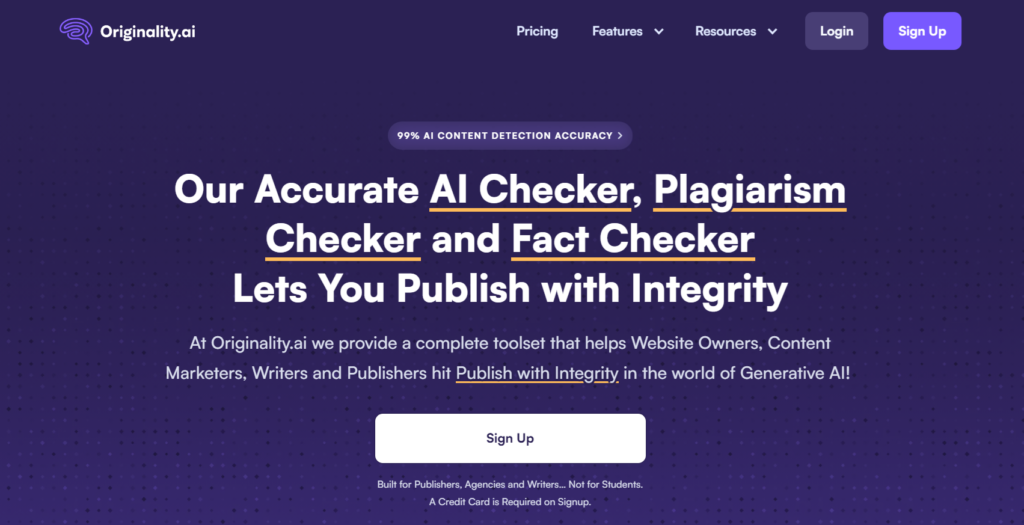
Using the best machine learning algorithms, It is quite reasonable to speak about Originality. Ai looks for patterns in semantics and syntax and at features such as the context distribution of a document to predict that it was manufactured by AI. The methodology of this hybrid model incorporates the results of AI with their rules for better accuracy.
Key Features:
- Real-time content scanning
- Detailed results with an artificial intelligence probability
- Customizable whitelisting/blacklisting
- API and plugins that can be easily adapted by the interfacing applications
Pros:
- The system’s high accuracy is supported by the use of comprehensive training data.
- Fast processing times
- Simplified approach to the user interface and accessibility of specific reports
- Possible use of variable pricing for teamwork or enterprise customers
Cons:
- May be a little expensive to individual consumers.
- No multilingual support
- Missing out on creating a free tier for those who want to test the platform on a small scale.
Website: https://originality.ai
2. Copyleaks
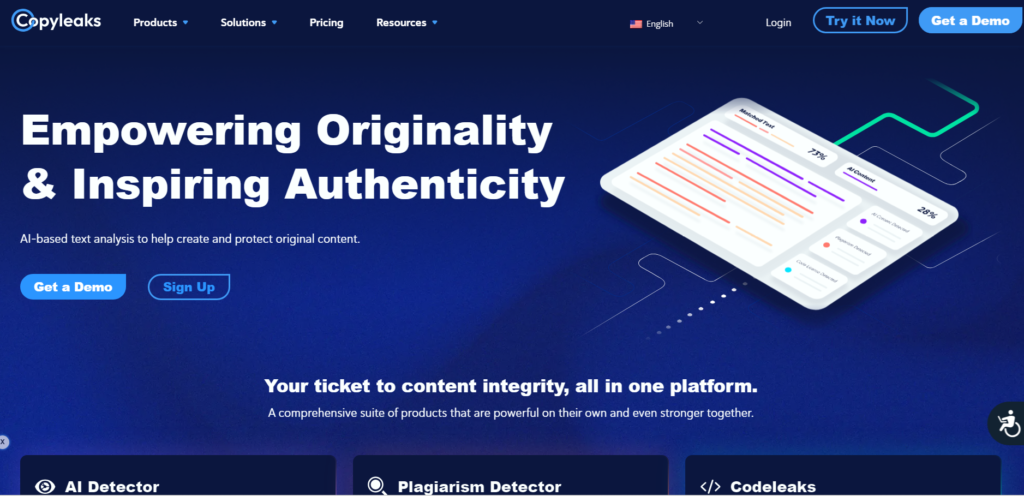
Primarily regarded as an advanced system of plagiarism check, Copyleaks has launched an AI-based content check as its extension. Their scanner employs Statistical Tracing which is based on analyzing statistics, such as numbers of words and the Waypoint Analysis, which makes the application of machine learning to sort most probably AI-created passages.
Key Features:
- Compares content to AI lists
- Supports side by side view
- Can scan all text, images, PDFs and from websites
- Has potential for over 100 languages
Pros:
- Is easily integrated into any plagiarism software.
- Detecting AI content and human plagiarism comprehensively.
- A broad set of high-quality policies that are appropriate for an enterprise
- This pricing is valid for students and professors in academic institutions
Cons:
- AI detection is not the primary concern.
- There are higher learning curves for non plagiarism use cases.
- Can be used for free but to access full features, one has to pay a fee.
Website: https://copyleaks.com
3. QuillBot
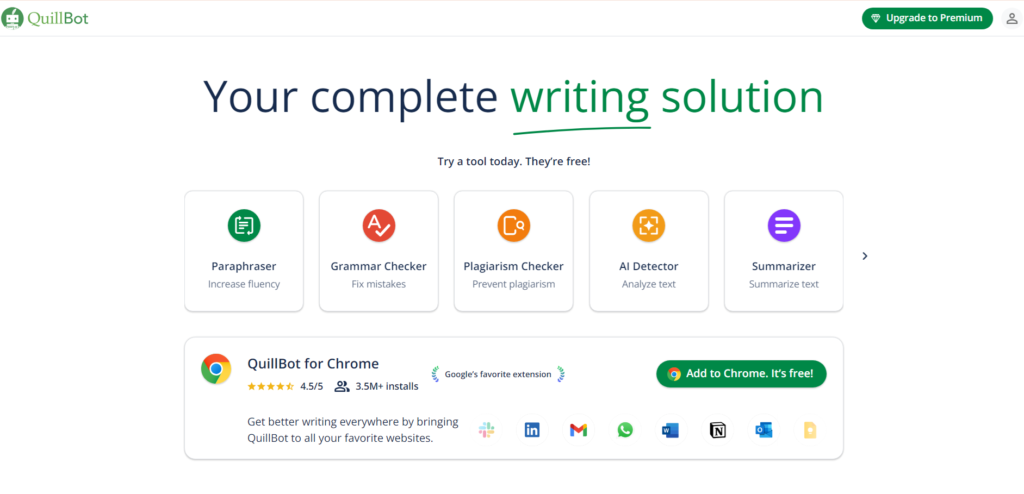
Unlike other writing tools that use the AI to write, edit, or generate content, the AI content detector in QuillBot uses the same deep-learning algorithms designed to detect AI-generated text. On this free online tool, users can copy-paste their content to compare the likelihood of having an AI language.
Key Features:
- In this design concept, it has a basic traffic light button to indicate the level of Ai
- The grammar checker also came installed
- Utility for PDFs and docs
- Free
Pros:
- There are no requirements of registration and payment for the individuals
- AI vs. human plagiarism Detection
- Clear and easy to navigate
- Web app support for cross-platform.
Cons:
- Not as well equipped as the paid enterprise software
- Less features that QuillBot’s paid Software
- Not a single integration, and the API is not open for customization.
Website: https://quillbot.com
4. Writer.com
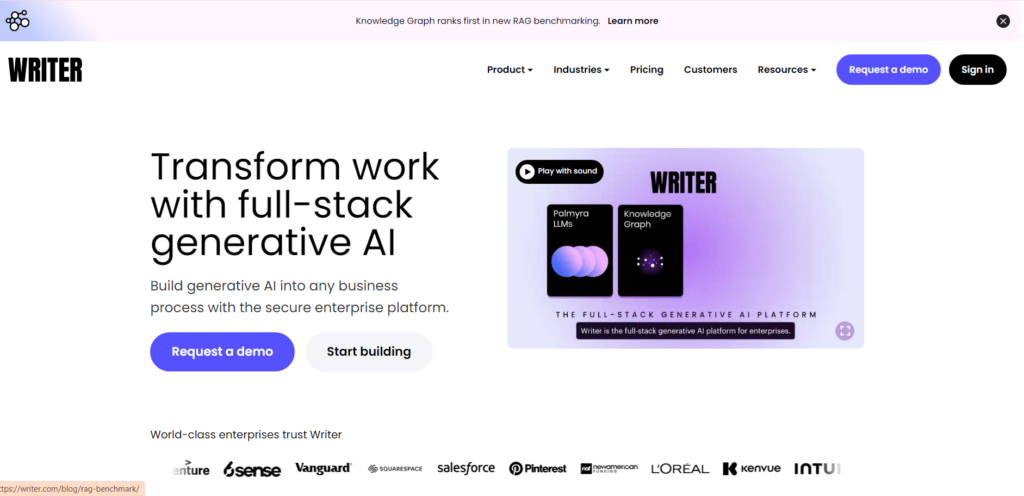
Writer.com provides both the technology of an AI writing assistant as well as an AI detection technology all in one place. Enhanced perspectives capable of dictating context, grammars, and semantic predictors analyze their content scanner’s outputs at the token level to determine AI generation.
Key Features:
- File import and bulk scanning
- High-level quantitative features such as burstiness and novelty
- Downloadable PDF reports
- Basic functionality is accessible for free, and premium features offered for a monthly subscription
Pros:
- The efficiency of writing coupled with enhanced detection.
- Updated periodically according to the new usable models of artificial intelligence.
- Non-profit organizations
- Transparent methodology
Cons:
- Not multilingual
- extra features across paid sections
- The absence of a content delivery network for speedier scanning
Website: https://writer.com/
5. GPTZero
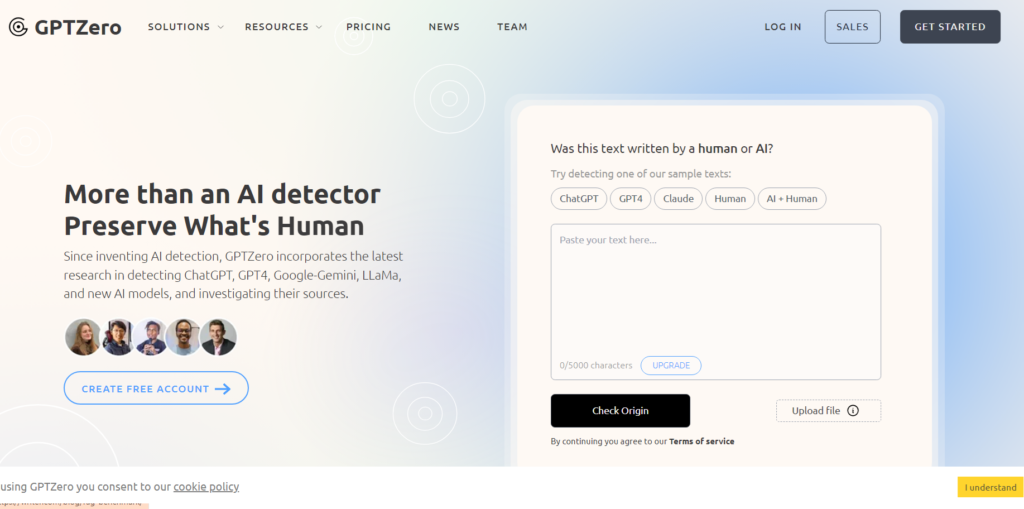
Making it a powerful tool, GPTZero is one of the first attempts to develop an AI writing detection tool attempted by the Anthropic Company for its GPT language model. To assess the likelihood of AI generation, it considers burstiness, curvatures, and other resulting estimations.
Key Features:
- The text input basic interface.
- Recognizes two types of models, namely GPT and InstructGPT.
- Experiencing progress in the form of model updates on an ongoing basis
- Open source to make it easily manageable
Pros:
- Free to Use
- Understandable metrics and data-presenting diagrams
- Integrated within other systems by using web applications.
- Kept being built up and enhanced
Cons:
- Can only retrieve Anthropic models
- Limited customization options
- There are no integration options or interface capabilities
Website: https://gptzero.me
6. ContentAtScale
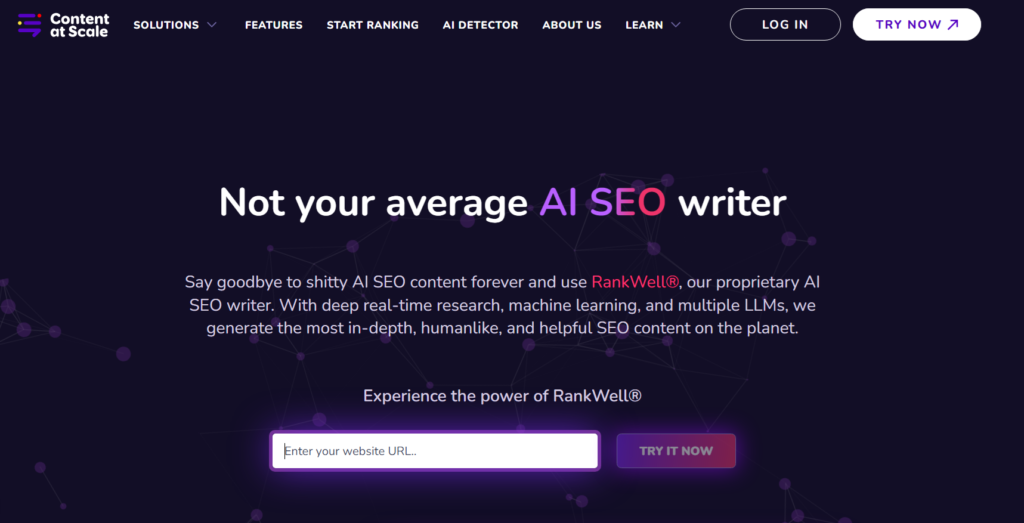
While ContentAtScale also provides tools and detection service for written content, it has integrated both functionalities into a single, enterprise-level platform. Their AI content classifier does multimodal analysis, semantic search, and an ensemble for precision in classification.
Key Features:
- Support for more than 100 languages and dialects.
- Able to work well in social networks for short and long material
- It supports integration with different popular LMSes and CMSes
- Well-formed, sophisticated dashboards and reports at a larger capacity
Pros:
- Highest precision accuracy.
- Workflows and communicable deployment scenarios
- Total integrated content operations solution
- Aspects of security and compliance
Cons:
- More complex onboarding for advanced capabilities
- Most of its offerings are paid but, for starters, there is a relatively small number of free features.
- Most of its functions are available only with a monthly or annual subscription.
Website: https://contentatscale.ai
7. Crossplag
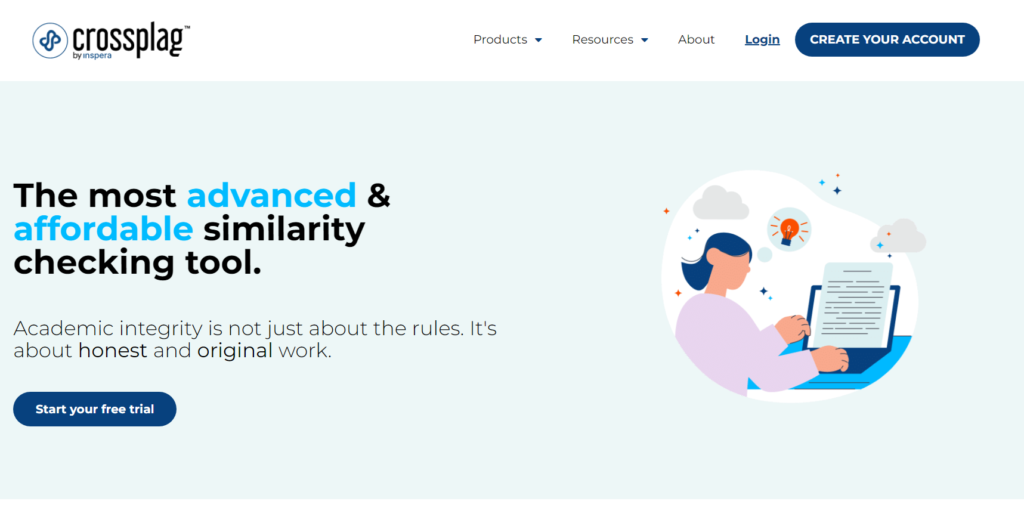
Crossplag is a solution for universities and schools in an artificial intelligence content detection sector that evolved from the AI plagiarism checker. It integrates the features of AI writing; it has knowledge hallucinations and factual blindness algorithms.
Key Features:
- Efficient integration with LMS and definitely works well with the assignment layout
- Monitoring the internet for leaked exam answers
- Customizable institutional policies
- Web-based application for providing technical support to the instructors and students in the form of live chat.
Pros:
- It has been specifically made to fit into the education sector.
- very strong and solid set of anti-cheating tools.
- Proportionate or even lower price.
Cons:
- More limited for non-academic applications.
- Forecast updates are done less often relative to competitors
- High management overhead may be another risk that comes from having higher potential.
Website: https://crossplag.com
8. TraceGPT

As can be recalled, TraceGPT is an application that is designed with the primary aim of identifying outputs created by GPT-3 and other OpenAI language models. In doing so, it reviews concepts such as context coherency, repetitiveness, and the randomness distributions to find potential AI text.
Key Features:
- Free to use for most components of the operating model.
- Comparison to AI references in parallel section
- A breakdown of the overall scoring criteria by the respective passages.
- Open to the community members’ feedback and evaluation of the system.
Pros:
- Offering some basic scanning functionality for a lower cost compared to the majority of its competitors.
- Supports open knowledge-sharing
- Very high detection methods, especially from a transparency perspective.
- Outlooks of simplicity and ease of use
Cons:
- Being confined to OpenAI models only.
- Minimal compatibility with opportunities for personalization
- A fully online service, no possibility to carry out some tasks offline.
Website: https://easywithai.com/ai-content-detectors/tracegpt/
9. Winston AI

Apart from the GPT-3 writing tools, Winston AI has an advanced detector that goes beyond detecting AI-generated text and identifies the language model that was used in the text; GPT-3, Jurassic, and BLOOM among others.
Key Features:
- Explicitly identifies the precise AI model involved
- blend of text analysis and metadata clues.
- Split blocks of text into the number of sentences or paragraphs if necessary
- Tools for checking PDFs, images, websites, and docs
Pros:
- Precise and deeper insights than the traditional “AI or no AI” binary
- Organizational and team mapping for start-ups and mid-to-large companies
- Adaptive model training functions
Cons:
- More costly options on the market.
- Training time needed by nontech personnel will take to understand the system.
- Newer entrants are likely to have been exposed to less number of training cases
Website: https://gowinston.ai/
10. Hive
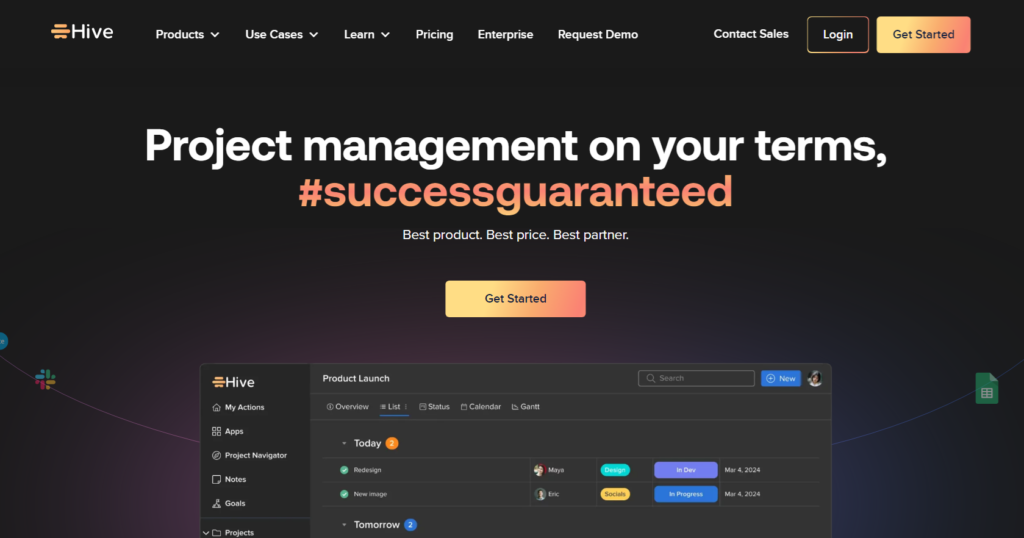
Complementing the list of AI content detectors, Hive can be described as an all-in-one AI governance tool that is focused on writing detection as one of its primary features. Some of these are GPT-Neox that are used for document processing while others are APIs/SDKs for smooth integration.
Key Features:
- Processing of AI models for risk assessment and remediation
- Modeling languages are provenanced across their life cycles.
- Content and data filtering tools
- A robust & integrated security model, designed to meet enterprise-level requirements
Pros:
- A successful AI governance framework
- The ability to set detailed options
- Quick and worldwide confinement with CDN architecture.
- An array of professional services
Cons:
- A premium product containing no option of free use
- Might have higher overhead expenses compared to other separate tools
- Tends to be much trickier for non-technical groups
Website: https://hivemoderation.com/ai-generated-content-detection
Conclusion
Given the enhancement in the generation and use of AI language models, it has become paramount for every organization to have a strong capability to detect such abnormalities. Oftentimes, it is the last resort to try and stop academic dishonesty, defend brands’ reputations, or simply facilitate the safe use of AI-generated content – the tools listed above offer robust solutions for that.
Finally, the best AI content detector tools have to satisfy the unique parameters or needs of an organization’s specific purpose and necessity.
FAQs
1. List some best AI content detector tools that are popular among people?
Premier Artificial Intelligence content detection solutions available in the market, such as Originality. ai, Copyleaks, GPTZero, Writer, etc.
2. How can the Detector of AI content work?
AI detectors employ sophisticated statistical models based on large sets of data concerning textual properties and characteristics like statistical probability, semantics, syntax, and other factors and textures.
3. Can Ai detectors detect which particular AI model was used for the text under analysis?
More sophisticated detectors such as Winston. ai can detect the precise AI model for producing the content (GPT-3, Jurassic, Bloom, and so on).
4. Are these Ai Content Detectors affordable?
Originality and similar companies have free trials but their use comes with the need to pay a premium fee, which can be expensive for personal use.



